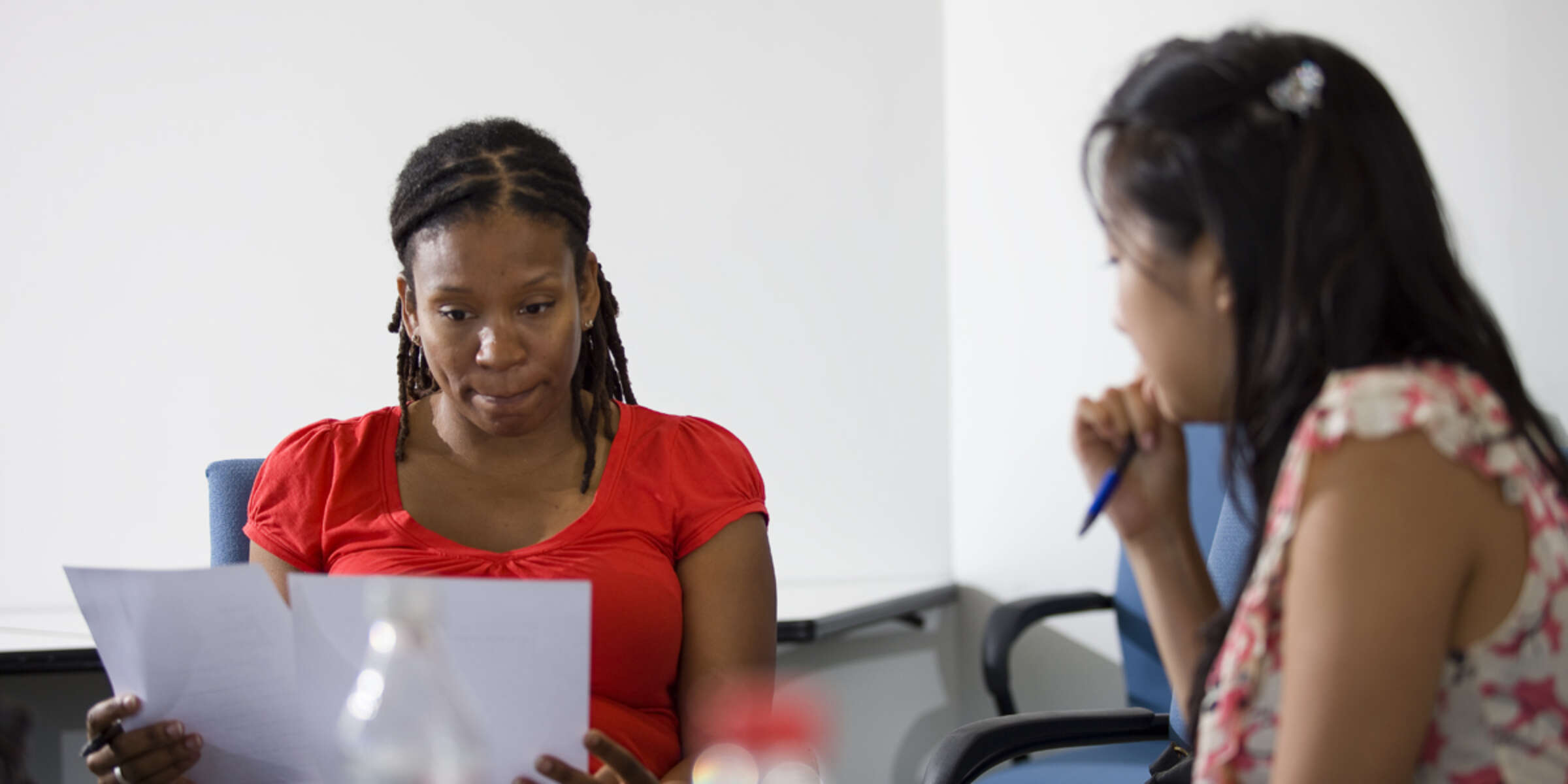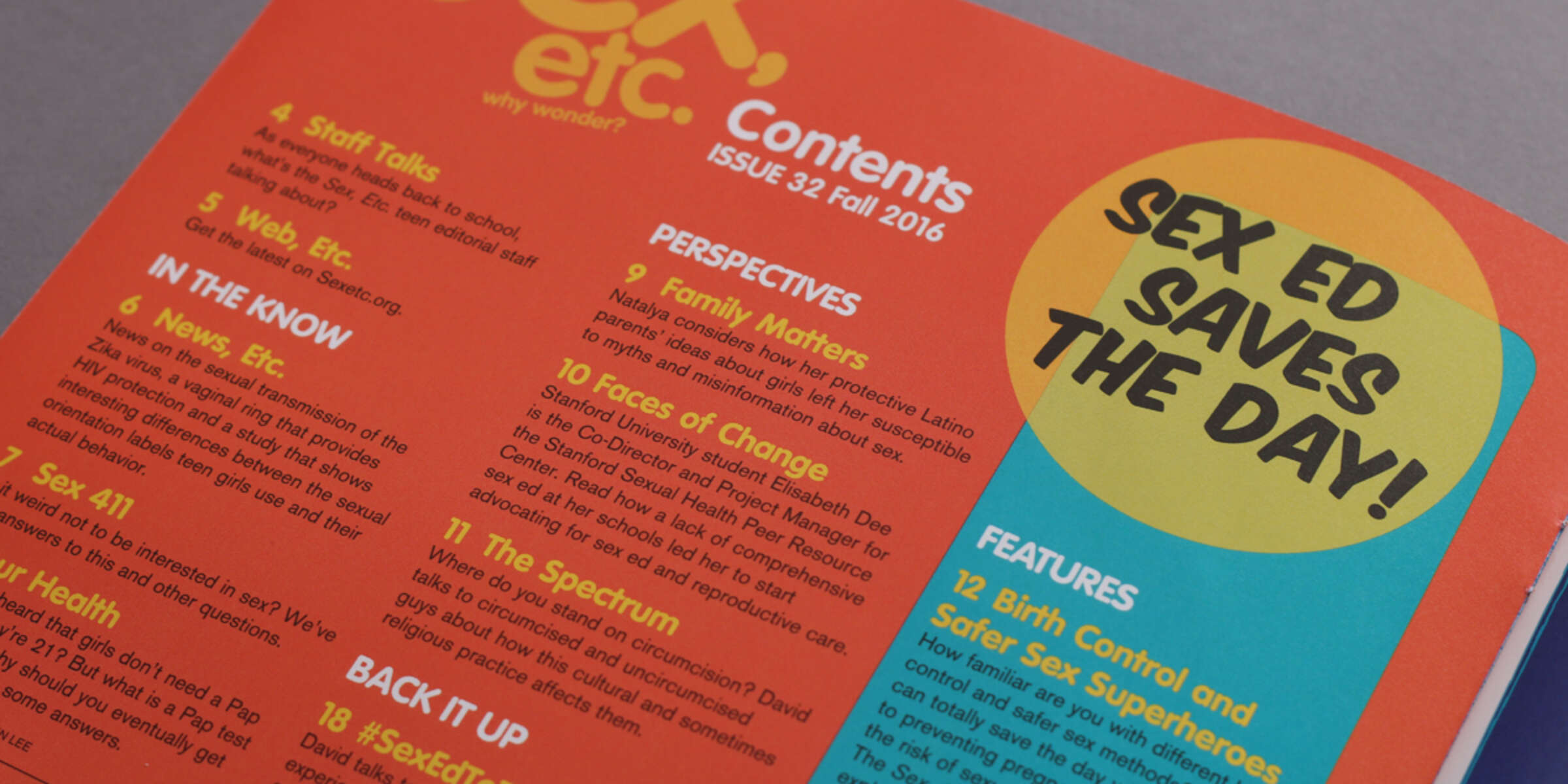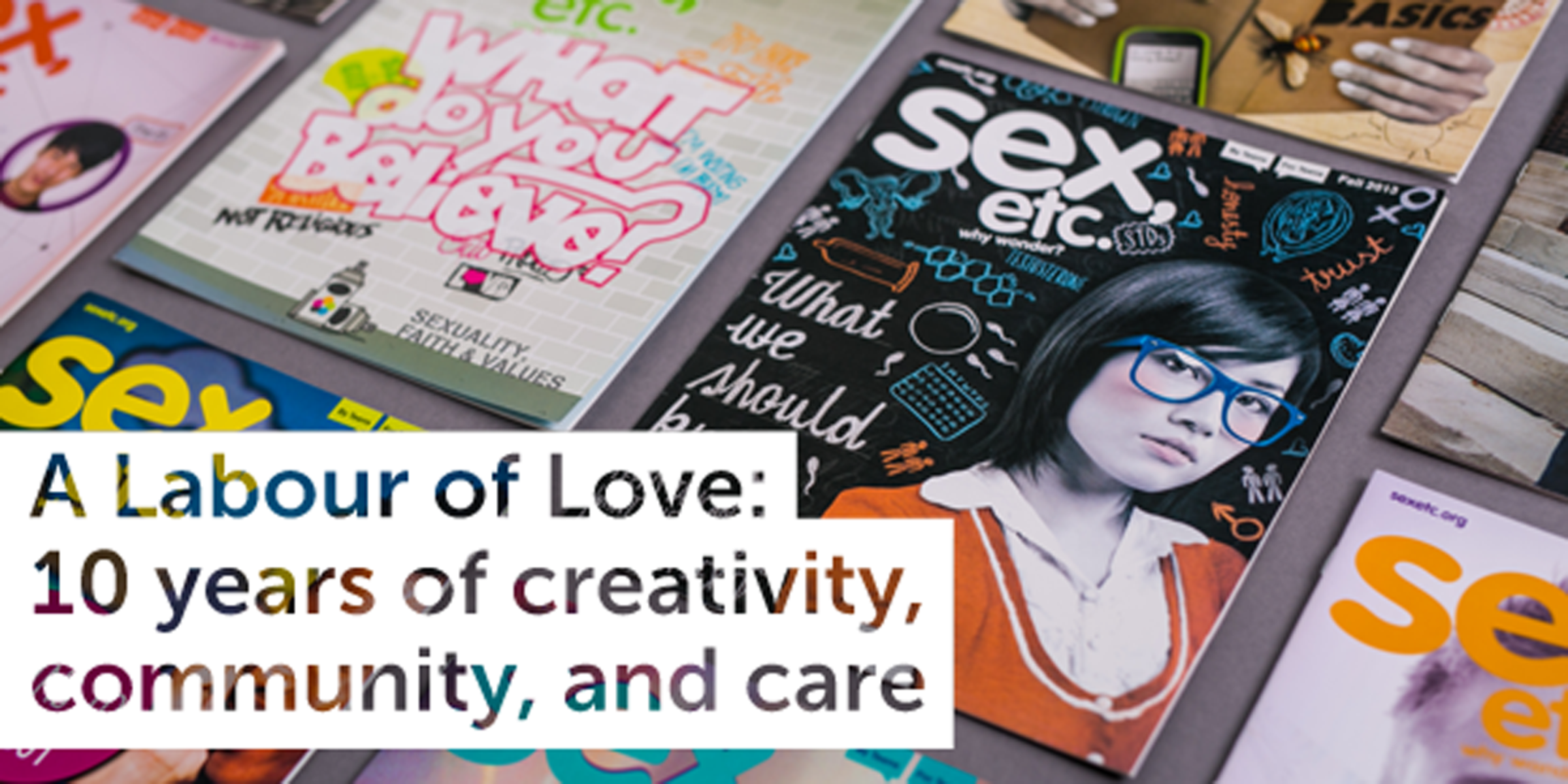[A Labour of Love] Sex, Etc. Magazine
September 2018
Welcome to the first edition of A Labour of Love: 10 years of creativity, community, and care, our special series of interviews celebrating the past ten years of The Public! Each month we’ll be speaking with a client or team member about their experiences with The Public and reflecting on how we continue to support and inspire each other.
We want to start this series by featuring our very first client, Answer at Rutgers University, an organization that is revolutionizing sex education for teens and young adults. Since 2008, The Public has been working with Answer in the graphic design of their groundbreaking magazine, Sex, Etc., written by and for teens.
We spoke to Answer’s Director of Communications, Lucinda Holt, about what the process has been like and how our common love and devotion to creating resources by and for young people shines through this invaluable resource.

The Public: Let’s start at the beginning. Can you tell us how you first connected with The Public?
Lucinda Holt: We met Sheila at a conference but before we met Sheila, we were fans. We loved Shameless magazine, it was like a sister publication out there doing really great work, producing content for young women that’s not your usual content, but really subversive, and playful, and powerful, and we were really excited about it. So when the time came for us to get bids on Sex, Etc. magazine, we said “what about those amazing people who do Shameless, wouldn’t it be great to have them bid on this project?” And so we reached out and we were just delighted with the work, the calibre of the design, and the fact that the work was being done by young women really thrilled us. Just to be working with people who could relate to the audiences being reached out to, who are people in their teens who have questions and want information about sexuality.
TP: It’s been quite a number of years of working on Sex, Etc. with The Public. Can you tell us how the process of working together has been?
LH: Sure, so we have been working with The Public for the past ten years, and it has always been a pleasure. Sheila and the team have always checked in with us about what is it that we are trying to do. What do we want to do? So, we have this content, but what are we doing? So they always sit down with us at the beginning of the year and the process to get a feel for what our goals are and to figure out how we can create design that supports the outcome that we want. And one of the outcomes we wanted was to support us in reaching young people, engaging young people so they want to read the magazine.
TP: Reflecting on the past ten years, is there anything you particularly remember or that stands out to you?
LH: What I love about Sheila is that she is always surrounding herself with young, upcoming graphic designers who are new to the field or learning their craft, and she’s always been so supportive. And even though we might be working with someone who’s new or is in school or whatever it is, it’s never, never felt unprofessional. We always felt like we were working with people who knew what they were doing, were on top of it, but at the same time feel good about the fact that The Public was nurturing new talent in the field.
Our vision for the world is a world where sexuality is recognized as a normal and healthy part of development, and young people get the information they absolutely need and deserve to make the choices that are right for them. […] that’s our vision for the world and it comes from a place of love.
TP: How do you see the role of love and care in the work that you’ve done with this project?
LH: So, the work that we do with The Public isn’t just about cranking out some kind of product, you know. Our vision for the world is a world where sexuality is recognized as a normal and healthy part of development, and young people get the information they absolutely need and deserve to make the choices that are right for them. So we care about that, that’s our vision for the world and it comes from a place of love.
And we love that in working on Sex, Etc., The Public is partnering with us on this thing that we care deeply about. They’re not just some agency that’s going to design some stuff, we know that they also care about these issues related to sexuality and are going to support us, not just by doing the work, but doing the work in a way that is loving and caring. And when I say “doing the work” I mean the way they relate to us, the way we relate with them. Even the images that we use for the covers and inside the magazine—we’re trying to figure out how do we represent a range of people who have different orientations, ethnic backgrounds, racial backgrounds, abilities, and show them in all their diversity and as people we respect, and have them reflected back to our readers, so that our readers, who come from multiple different backgrounds see themselves, can feel like “this magazine speaks to me and answers my questions about sexuality in a caring way.”
TP: Have you noticed anything about the creative process that has shown us different ways we can teach others and ourselves ways to create a better world?
LH: What I always love is that The Public [knows] the power of the visual—and when I say they know the power of the visuals, they know that the race of the person on the cover matters, what they look like, their hair, all the things that seem like they don’t matter, they do matter in terms of people seeing themselves, with how they’re represented in the magazine, and seeing themselves represented with care. We want real, young people who are just being themselves and we want to be respectful of who they are and how they want to show themselves to the world, and that’s something that The Public has always done which I really value. We never had to have a big talk—it’s just a part of the process.

TP: Sex, Etc. has always had a genuine sincerity to it, where it’s not just about representation just for the sake of representation. You mentioned the energy shared too, how we relate to each other, it’s been interesting to see how that connection translates into the work.
LH: I worked at [a major magazine publisher] many years ago, and they called all the assistants “girls”. There was this culture that was shocking to me, but I was a part of that, because it was my job, but I was just dumbfounded. [I thought] “is this really like the 1950s?” It really was. Maybe it’s changed now, but at the time it felt like we were in a different decade. I feel like all of that kind of informs what you can produce. Like if you’re treating women like—the assistants who worked there, calling them “girls”, treating them kind of like the help—that produces a certain calibre of work. Sheila and the team are always so thoughtful and gracious and kind. Those little things that we tend to take for granted, but that make a difference. There’s a kindness in there that comes out in the work that’s produced.
TP: It’s interesting to think of The Public’s impact beyond conventional metrics, by valuing work with qualities such as kindness. We don’t always get a chance to hear how people feel after the projects are completed. Before we wrap up, is there anything else you want to add?
LH: Sure, it makes me really happy just that The Public exists. They’re really committed to doing the work in the world, and it’s not just about money for them, […] it’s really about a commitment to transforming the world and having it be a better place. We really appreciate that they’re doing this work that is so important and I wish more companies had that kind of commitment and those kinds of ideals.
I was happy to do this, I’m excited to see the newsletter, and to hear what other people have to say. We love The Public, we’ve had such a wonderful ten years working with them, and we’re proud to have worked with them for so long.
TP: Thanks Lucinda!
Date

How do you want to change the world and how can we help?
Let’s Connect